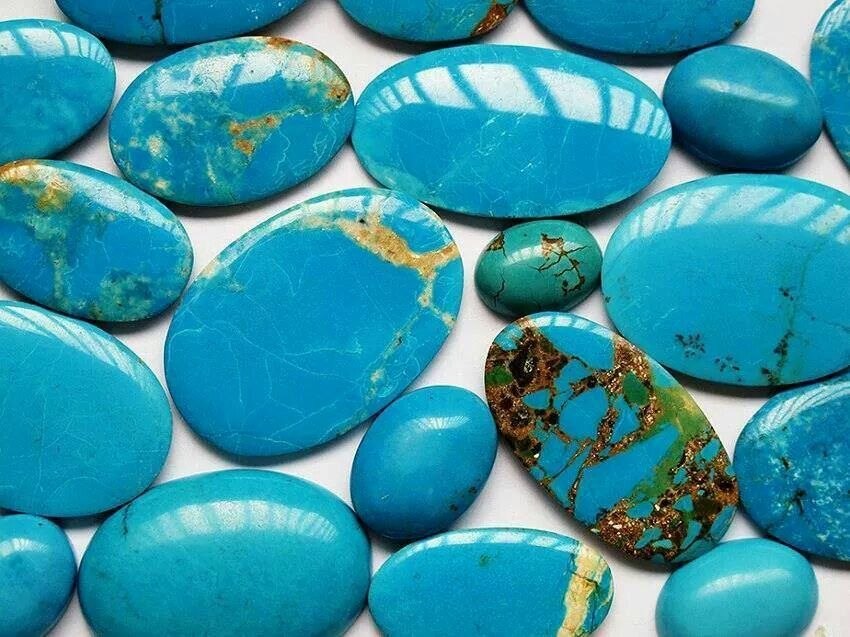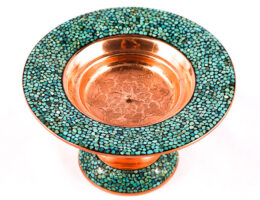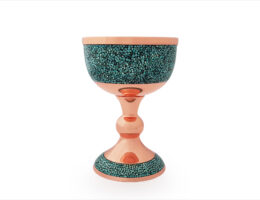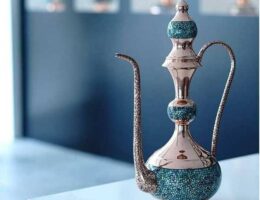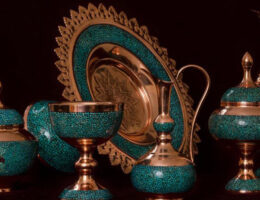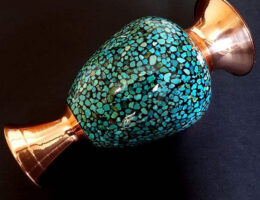IRAN ART EXHIBITION: FIRUZE OR TURQUOISE IS VERY POPULAR IN PERSIAN STYLE
You may be interested to know that the word Turquoise actually dates to the 17thcentury, when trading routes brought turquoise from Persia through the Middle East towards Europe. The traders passed through Turkey, known as “Turquie” in French, and the material was named “Turquies” (“Turkish”) by locals.
Iran has been an important source of turquoise for at least 2000 years where it is called “fīrūzeh” in Farsi. You may have noticed its use in Iranian architecture, where the blue turquoise was used to cover the domes of palaces and mosques because its intense blue colour was also a symbol of heaven on earth.
Persian Turquoise is blue naturally and is sourced mostly in Neyshabur, which is located on a 2012m mountain peak of Ali-Mersai near the great city of Mashad. The mining of turquoise in Iran, along with Egypt, is the oldest known in the world. With its clear, even blue colour with no evidence of green, Persian Turquoise has been the most sought after throughout history. It was so highly valued that all 79 emeralds in the crown that Napoleon gave his Empress Marie Louise were replaced with Persian Turquoise cabochons, as you can see below.
You probably have noticed that turquoise is among the most popular bead gemstones, and this is more so the case in Iran where turquoise bead bracelets and necklaces are extensively used. This shouldn’t be surprising given that the Persian style and use of turquoise is so iconic that it has influenced other cultures too. Most notably its influence can be seen in India following the Mughal Empire in buildings such as the Taj Mahal.
In modern day Iran, rings embedded with Persian Turquoise are the most popular form of jewellery worn by men, whilst turquoise bead bracelets and necklaces are commonly worn by fashionable Iranian women. The popularity of turquoise can easily be attributed to the beauty of the colour, if not for the fact it has been the de facto national stone for millennia, but also that the stone is known to possess healing qualities.
As you may have expected, with the popularity of a stone that is known primarily for its colour, the colour turquoise has been used extensively in Iranian art. Often used in paintings, whether that is on a plate, jewellery or a building, the paint is naturally derived from the stone, as opposed to artificial paint.
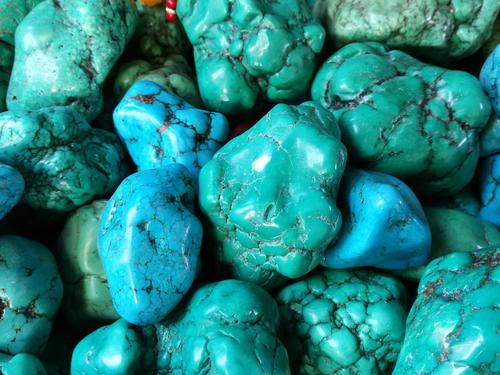
IRAN ART EXHIBITION: Nishapur town in addition of being the cradle of science, culture and famous people in some eras of Iran’s history and civilization has also been globally famous since ancient times for having a precious gem called turquoise.
Blue, original and royal; these are the features implied to the best quality stone of Iran across the world. It is a stone that its first and eldest mine is located in the 53 kilometer of the North West Neyshabour and in Firouzeh town and each year 19 tons of quality turquoise are extracted from its mine.
It is worth knowing that hand lathing of turquoise is harder than the industrial lathing of this stone, but a better quality is achieved through hand lathing.
The more a turquoise stone is bluer, darker, smoother and more coherent, the more price it has.
